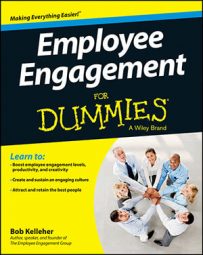People of different generations don't just communicate differently. They also have different motivational drivers. Smart managers adjust their communication, leadership, oversight, recognition, and patience levels when leading a department populated by people of different generations.
The descriptions that follow are merely generational generalizations. Expect some exceptions to the rule. That said, most employers (and employees) will recognize the truths in the traits associated with each generation.
Attracting, training, engaging, and rewarding Baby Boomers
Generally identified as being born between the years of 1945 and 1964, Baby Boomers are idealistic and have a tendency toward personal and social expression. The first generation to earn and possess more than their parents, Baby Boomers are typically ambitious, materialistic, and prone to being workaholics.
Questioning authority — a tenet for masses of young people in the 1960s and 1970s — is still very much a part of the Boomer approach to life and to work. Boomers are far more apt to challenge leadership than those who came before them, and also to embrace change. Boomers also remember when getting e-mail was a good thing, and not overwhelming.
Unlike their predecessors, Baby Boomers have largely opted against retiring at age 65. Why? For one thing, they like their jobs. Sure, if they'd worked in a coal mine or an assembly line for the last 30 years, they might feel differently.
But many Baby Boomers work in knowledge-based positions, which are often quite engaging. Besides, with the demise of traditional pension plans — plus the fact that people are, on average, living longer — many Boomers have found that retirement at 65 is not financially feasible.
Traditionalists (a.k.a., “The Silent Generation”)
Don’t assume that Baby Boomers comprise the oldest members of your employee roster. There may remain a few “Traditionalists,” or workers born between 1925 and 1944 (though not many, given their age). Traditionalist workers are motivated by conformity, stability, security, and upward mobility.
They tend to pledge allegiance to the company that employs them. They identify with the statement “I will give my all to my company” with nearly the same fervor they might once have felt for “I will fight for my country.” This theme was popularized in Tom Brokaw’s book The Greatest Generation (Random House).
This generation is also characterized by a respect for authority. As such, their fidelity to the company often blends seamlessly with their loyalty to superiors and co-workers.
Traditionalists take pride in doing their work consistently, dependably, and well, but they likely aren’t interested in the latest technological tools or the hottest trends in management. With retirement looming, many Traditionalists are motivated by the desire to leave the workforce in security and comfort, and pleased that they fulfilled their employment obligations to their companies.
Due to today’s difficult economic conditions, however, some Traditionalists, like many Boomers, have postponed retirement until their savings recover. This can lead to tensions with the younger staff, who are looking to move up.

